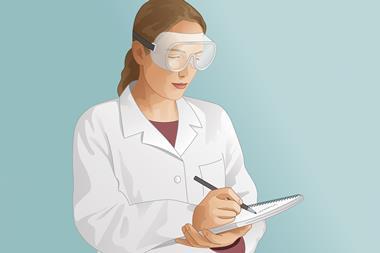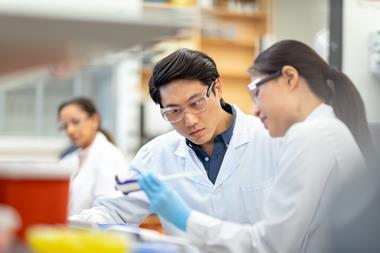The commercial arm of Cancer Research UK has some exciting opportunities for medicinal chemists, reports Yfke Hager
The commercial arm of Cancer Research UK has some exciting opportunities for medicinal chemists, reports Yfke Hager
Cancer Research Technology (CRT) is the commercial arm of the national charity Cancer Research UK. It was founded in September 2002 following the merger of two British cancer charities - the Cancer Research Campaign and Imperial Cancer Research Fund - each of which had their own technology transfer companies. The charity merger gave rise to Cancer Research UK, the UK’s leading charity dedicated to cancer research.
CRT’s remit is to advance discoveries to beat cancer. ’We turn basic research discoveries into products that help patients,’ says Keith Blundy, CEO of CRT. To deliver this vision, he says, the company focuses on four principles. ’We find and develop cancer discoveries for patients, support cancer researchers, work closely with industry, and challenge ourselves to improve the chain from research to patient.’ CRT bridges the gap between drug discovery - mostly within the realm of academia - and clinical development, which usually requires commercial partners.
Citing some examples, Blundy highlights the company’s strengths in drug discovery capability, including in vivo proof of principle research, and successful clinical development partnerships with pharmaceutical companies. The latter give a new lease of life to anti-cancer agents deprioritised by biotechnology and pharmaceutical companies with large drug development pipelines.
Profits fund cancer research
The company holds a diverse portfolio resulting from these activities. ’We currently have financial stakes in 38 molecules in clinical development,’ Blundy says. While CRT is a ’for profit’ organisation, profit is handed back to Cancer Research UK to support further cancer research. The charity, which is almost entirely funded by donations from the public, supports over 500 oncology research groups in more than 35 UK towns and cities.
Earlier this year, CRT announced a new initiative to further close the gap between academia and industry, in which the company and Cancer Research UK hand pick ’crack teams’ of leading scientists who will work hand in hand with industrial partners to translate basic science into new therapeutic and diagnostic tools.
Several factors distinguish CRT from other technology transfer companies, says Blundy. The company focuses exclusively on oncology, and takes on any oncology projects regardless of their origin, in terms of both geographical location and type of project. The company has considerable in-house drug discovery capability - by the end of this financial year, CRT will employ around 90 drug discovery scientists. ’It’s unusual for a technology transfer company to employ a large number of staff in its own drug discovery function,’ Blundy notes.
Global expansion
While the company’s headquarters and main R&D facility are housed in London, CRT has ambitious plans for expansion. In May 2008, the company opened a laboratory in Cambridge, UK, its first multidisciplinary drug discovery laboratory outside London. Similar ventures in Manchester and Glasgow are soon to follow. The new labs will strengthen existing collaborations with research institutes in these locations. ’Our aim was to establish closer ties to the research community,’ Blundy says. ’We believe that it is important for our business managers to be close to the research institutes that are affiliated to Cancer Research UK.’ The company has also expanded its operations to new continents, with a subsidiary in Boston, US, and a venture partner in the form of the recently launched Cancer Therapeutics in Melbourne, Australia. ’We’ve got our hands full getting these sites established, and making them a success,’ says Blundy.
Drug discovery scientists in CRT’s laboratories have expertise in molecular biology, assay design, medicinal chemistry and pharmacology. The company’s integrated business teams also draw on the talents of business development, patent, legal, finance and marketing specialists. Employment opportunities exist for medicinal chemists, says Blundy. ’We’re still recruiting for our new Cambridge laboratory.’ He stresses that the company has a friendly working environment. ’We’ve retained a very sociable feeling, despite being three to five times bigger than we were five years ago.’
Facts and figures
Number of employees:
~140 (estimated total by end of financial year)
Number of chemists:
~30 medicinal chemists (estimated total by end of financial year)
Locations:
London, UK(headquarters and R&D facility)
Cambridge, UK(drug discovery laboratory)
Manchester, UK(drug discovery laboratory)
Glasgow, UK(drug discovery laboratory)
Boston, US(wholly owned subsidiary)
Melbourne, Australia(venture partner: Cancer Therapeutics)
Annual Profit:
?2 million (forecast for financial year)
Social:
Legendary treasure hunts












No comments yet